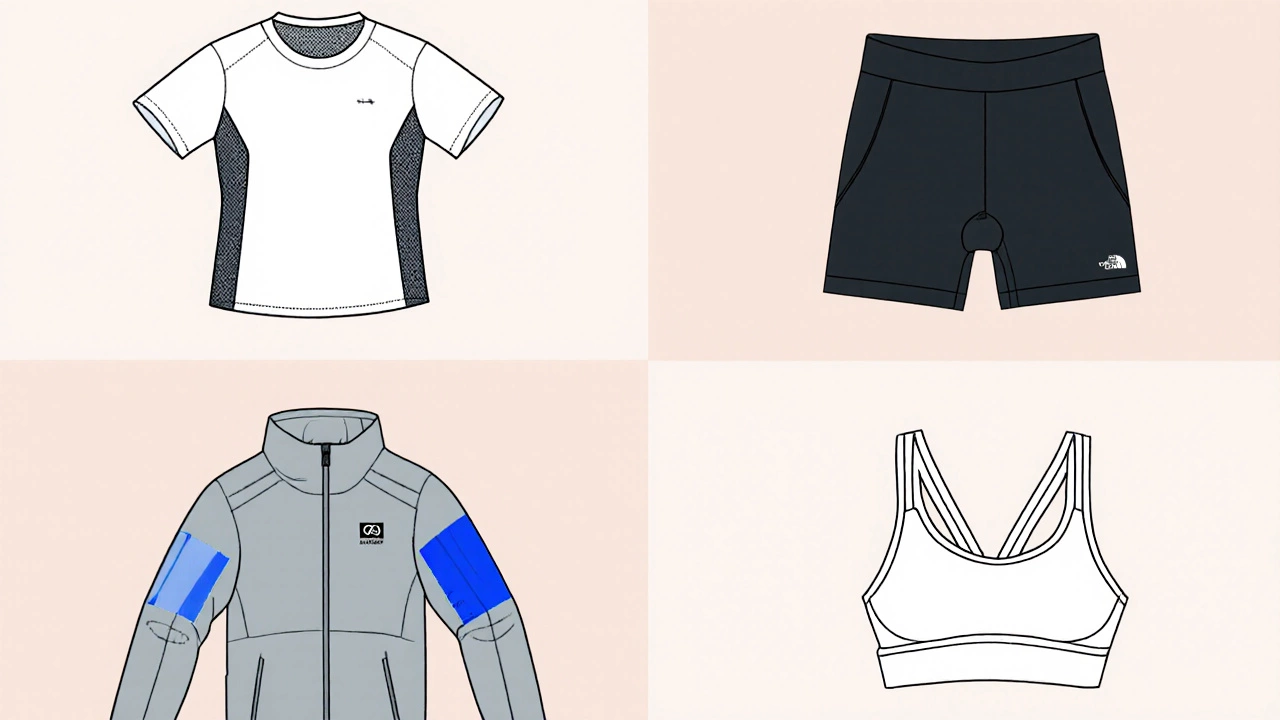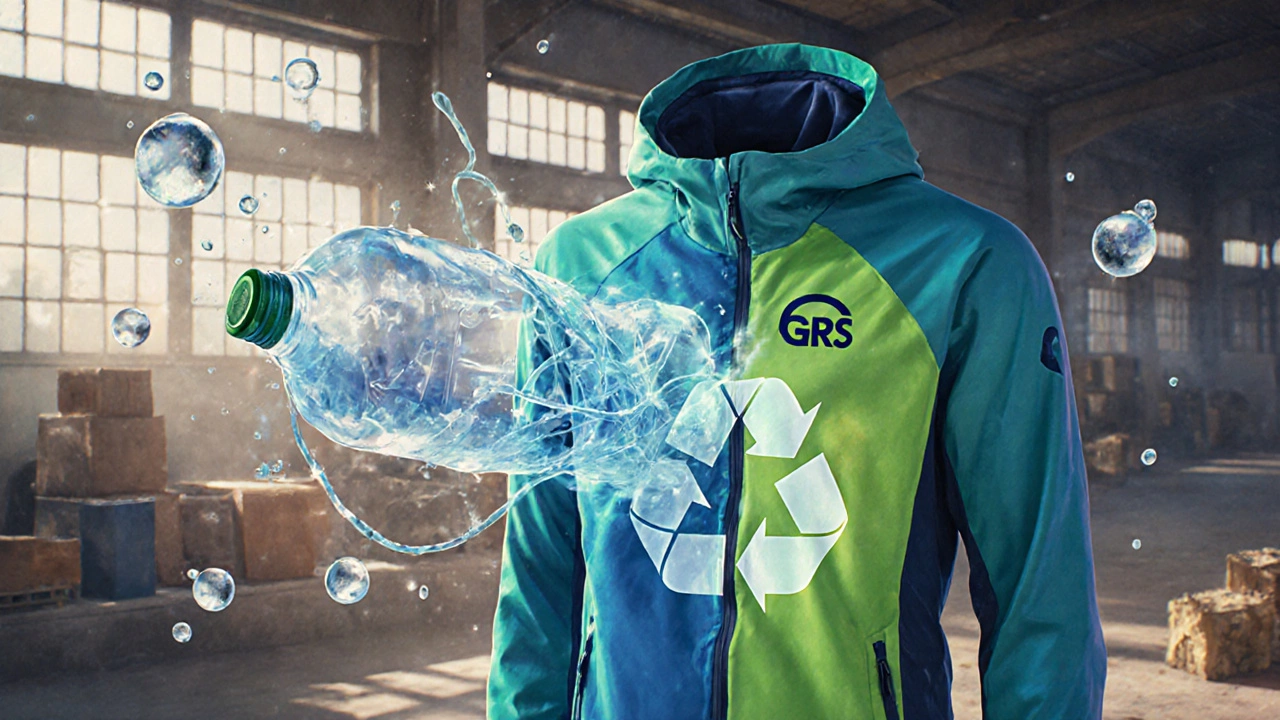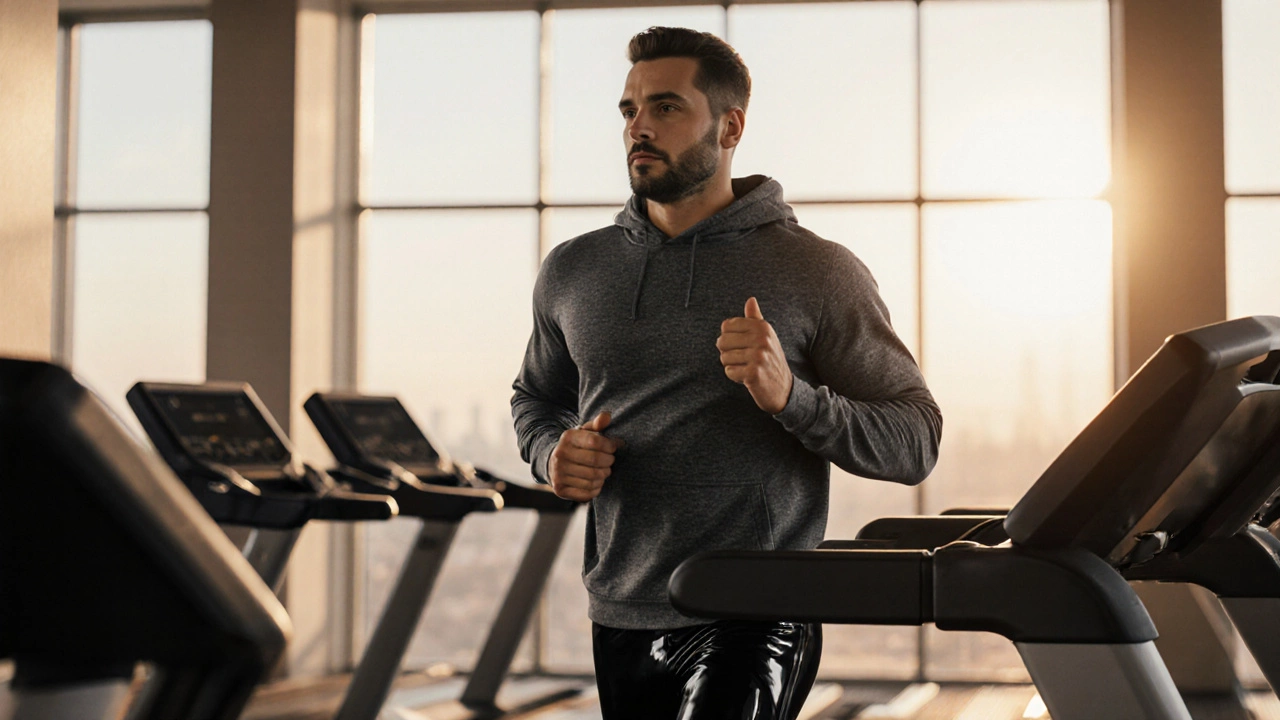Sportswear Category Selector
Select your activity type and conditions to find the perfect sportswear category for your needs.
Your Activity
Your Preferences
When you hear Sportswear is clothing engineered for physical activities, combining functionality with style, you might picture a jogger’s hoodie or a pair of sleek leggings. But the truth is, the category stretches far beyond those basics, covering everything from high‑tech performance gear to everyday casual pieces that still keep you ready for a sprint. Below we break down every major component, the tech that powers them, and how to choose the right pieces for your routine.
Defining the Core: What Counts as Sportswear?
At its heart, sportswear is apparel designed to support movement, manage sweat, and protect the body during exercise. It blends technical fabrics with ergonomic cuts, meaning each item serves a purpose-whether that’s boosting breathability, adding compression, or providing thermal regulation. The line between pure performance gear and fashion‑forward pieces can blur, but the defining trait stays the same: functionality first.
Core Categories of Sportswear
Understanding the broad families helps you spot the right gear for any activity.
- Performance Tops: Includes moisture‑wicking t‑shirts, breathable tanks, long‑sleeve technical shirts, and lightweight jackets. These pieces often feature flat seams to reduce chafing.
- Bottoms: Ranges from compression shorts and running leggings to loose joggers and tapered track pants. Look for articulated knees and gusseted crotches for full range of motion.
- Outerwear: Windbreakers, shell jackets, and insulated vests protect against the elements while keeping weight low. Many use waterproof membranes like Gore‑Tex® for rain‑ready runs.
- Specialty Items: Sports bras, base layers, and compression sleeves add targeted support. They often incorporate targeted elasticity zones for optimal muscle support.
Materials and Technologies That Power Sportswear
Modern sportswear leans on advanced textiles to solve sweat, temperature, and durability challenges.
Performance fabrics are engineered blends such as polyester‑elastane, nylon, and recycled fibers that balance stretch, durability, and quick‑dry properties. These fabrics typically feature a low denier (thin yarn) to reduce weight.
Moisture‑wicking technology moves sweat from skin to the garment’s exterior surface, where it evaporates faster-think of it as a built‑in cooling system. Brands often market it under names like Dri‑Fit®, CoolMax® or Climalite®.
Compression clothing applies graduated pressure to improve blood flow, reduce muscle oscillation, and speed recovery. Compression leggings, sleeves, and socks are staples for runners and weight‑lifters alike.

Style Overlap: Activewear, Athleisure, and Performance Apparel
These three terms get tossed around, but each has a niche.
| Aspect | Sportswear | Activewear | Athleisure |
|---|---|---|---|
| Primary Goal | Optimize performance for specific sport | Support general workouts | Blend comfort with street‑style aesthetics |
| Typical Materials | High‑tech performance fabrics, waterproof membranes | Moisture‑wicking blends, light stretch | Soft jersey, recycled polyester, cotton blends |
| Design Focus | Fit, ventilation, durability | Ease of movement, quick‑dry | Trend‑forward cuts, color palettes |
| Best Use Cases | Triathlons, mountain climbing, professional training | Gym sessions, yoga, casual runs | Running errands, coffee dates, light jogs |
Understanding these distinctions helps you shop smarter. You might choose a pure‑performance top for a marathon, but an athleisure hoodie could be perfect for a post‑run coffee.
Buying Guide: What to Look For
- Fit for the activity: Tight compression for support, looser cuts for freedom of movement.
- Fabric performance: Check if the material claims moisture‑wicking, breathability, or UV protection.
- Durability features: Flatlock seams, reinforced knees, and anti‑pilling treatments add lifespan.
- Environmental footprint: Recycled polyester, organic cotton blends, and low‑impact dyes are becoming common.
- Price‑to‑value ratio: Higher price often means better tech, but many mid‑range brands deliver comparable performance.

Sustainability Trends Shaping Sportswear
Eco‑conscious shoppers see a surge in recycled‑content garments. Brands now advertise pieces made from post‑consumer plastic bottles, turning waste into high‑performance yarns. Additionally, closed‑loop manufacturing reduces water usage by up to 60% compared with traditional dyeing processes.
Look for certifications like GRS (Global Recycled Standard) or bluesign® to verify claims.
Care Tips to Extend the Life of Your Gear
- Turn garments inside out before washing to protect surface coatings.
- Use cold water and a gentle cycle; avoid fabric softeners that can clog moisture‑wicking pores.
- Air‑dry whenever possible; high heat can degrade elastane and waterproof membranes.
- For stubborn odors, add a cup of white vinegar to the rinse cycle.
- Store leggings and compression socks folded, not hung, to preserve elasticity.
Frequently Asked Questions
Is athleisure considered sportswear?
Athleisure shares many materials with sportswear but prioritizes style over performance. You can wear it for light activity, yet it lacks the specialized tech of true sportswear.
Do I need different shoes for each sport?
While some shoes are sport‑specific-like trail running shoes with aggressive tread-many cross‑training sneakers handle gym, cardio, and short runs comfortably. Match the shoe’s design to the primary activity for best support.
Can I wear sportswear for everyday outfits?
Absolutely. The rise of athleisure shows that performance fabrics look great off the track. Pair a sleek leggings with a structured jacket for a polished casual look.
How often should I replace my compression gear?
Compression fabrics lose elasticity after about 200-300 washes. If you notice reduced support or visible pilling, it’s time for a new pair.
What’s the best way to store sports bras?
Store them flat in a drawer or on a dedicated bra rack. Hanging can stretch the under‑bust band and distort the shape.
